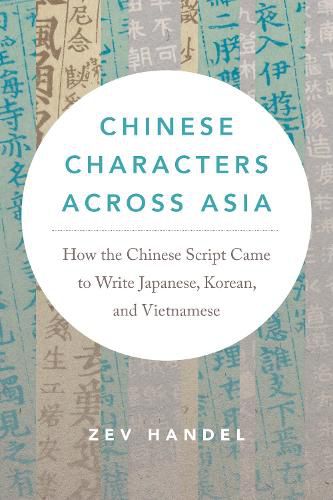Readings Newsletter
Become a Readings Member to make your shopping experience even easier.
Sign in or sign up for free!
You’re not far away from qualifying for FREE standard shipping within Australia
You’ve qualified for FREE standard shipping within Australia
The cart is loading…






A fascinating story of writing across cultures and time
While other ancient nonalphabetic scripts-Sumerian cuneiform, Egyptian hieroglyphs, and Mayan hieroglyphs-are long extinct, Chinese characters, invented over three thousand years ago, are today used by well over a billion people to write Chinese and Japanese. In medieval East Asia, the written Classical Chinese language knit the region together in a common intellectual enterprise that encompassed religion, philosophy, historiography, political theory, art, and literature. Literacy in Classical Chinese set the stage for the adaptation of Chinese characters into ways of writing non-Chinese languages like Vietnamese and Korean, which differ dramatically from Chinese in vocabularies and grammatical structures.
Because of its unique status in the modern world, myths and misunderstandings about Chinese characters abound. Where does this writing system, so different in form and function from alphabetic writing, come from? How does it really work? How did it come to be used to write non-Chinese languages? And why has it proven so resilient? By exploring the spread and adaptation of the script across two millennia and thousands of miles, Chinese Characters across Asia addresses these questions and provides insights into human cognition and culture. Written in an approachable style and meant for readers with no prior knowledge of Chinese script or Asian languages, it presents a fascinating story that challenges assumptions about speech and writing.
$9.00 standard shipping within Australia
FREE standard shipping within Australia for orders over $100.00
Express & International shipping calculated at checkout
A fascinating story of writing across cultures and time
While other ancient nonalphabetic scripts-Sumerian cuneiform, Egyptian hieroglyphs, and Mayan hieroglyphs-are long extinct, Chinese characters, invented over three thousand years ago, are today used by well over a billion people to write Chinese and Japanese. In medieval East Asia, the written Classical Chinese language knit the region together in a common intellectual enterprise that encompassed religion, philosophy, historiography, political theory, art, and literature. Literacy in Classical Chinese set the stage for the adaptation of Chinese characters into ways of writing non-Chinese languages like Vietnamese and Korean, which differ dramatically from Chinese in vocabularies and grammatical structures.
Because of its unique status in the modern world, myths and misunderstandings about Chinese characters abound. Where does this writing system, so different in form and function from alphabetic writing, come from? How does it really work? How did it come to be used to write non-Chinese languages? And why has it proven so resilient? By exploring the spread and adaptation of the script across two millennia and thousands of miles, Chinese Characters across Asia addresses these questions and provides insights into human cognition and culture. Written in an approachable style and meant for readers with no prior knowledge of Chinese script or Asian languages, it presents a fascinating story that challenges assumptions about speech and writing.